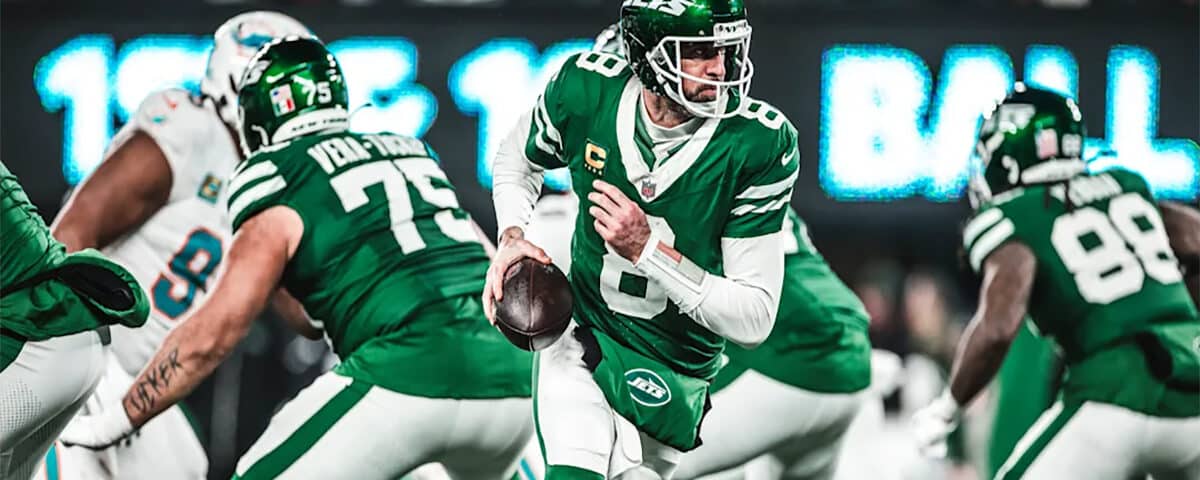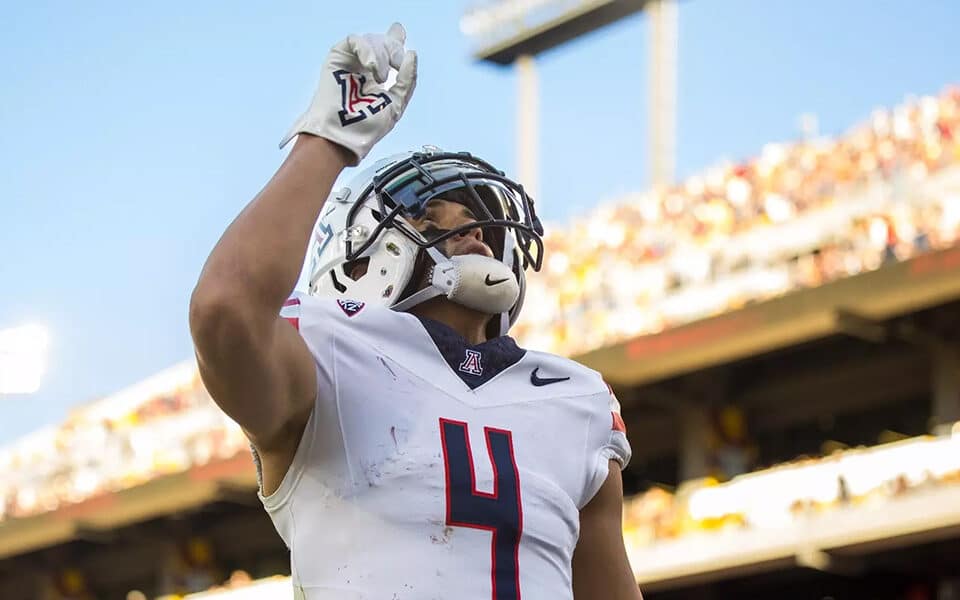
Jets Top Predicted Head Coach Target Declines Patriots Interview Request
January 10, 2025
Brett Favre Believes Aaron Rodgers Still Has ‘A Lot of Juice Left’
January 15, 2025The Truth About the New York Jets Offensive Line

The New York Jets offensive line often serves as a scapegoat for the team’s offensive struggles. Fans and analysts alike have pointed fingers at the line, blaming it for poor quarterback play, inconsistent scoring, and a lackluster run game. However, a deeper dive into the numbers reveals that these criticisms may not be entirely justified.
Pass Protection: A Silent Strength in 2024
The 2024 season has been tumultuous for the Jets in many ways, but pass protection has not been the glaring issue many assume it to be. According to NFL Next Gen Stats, quarterback Aaron Rodgers has been pressured on just 24.4% of his dropbacks. This is the second-lowest pressure rate in the NFL among qualified quarterbacks.
The numbers don’t lie: the Jets offensive line has been quietly effective at keeping defenders at bay. Their ability to protect the quarterback has been critical in giving Rodgers the time he needs to execute plays.
Does Aaron Rodgers’ Quick Release Skew the Numbers?
Some critics argue that Rodgers’ quick release time—averaging just 2.66 seconds, the sixth-fastest in the league—masks the offensive line’s deficiencies. While it’s true that a quick release can mitigate pressure, the data tells a more nuanced story.
When Rodgers holds the ball for 2.5 seconds or longer, his pressure rate rises to 40.5%. Even then, this is the seventh-lowest rate among all NFL quarterbacks. This consistency suggests that the offensive line is holding up well, even in situations where the quarterback’s release time extends.
Comparing to League Averages
To put this into perspective, the league average for pressure rates on dropbacks longer than 2.5 seconds hovers around 44%. The Jets’ ability to stay well below this threshold highlights their competence. In short, the offensive line is performing better than most teams, even under prolonged duress.
Run Blocking: A Work in Progress
While pass protection has been a relative strength, the Jets’ run blocking has shown more inconsistency. The team ranks in the middle of the pack in metrics like adjusted line yards and power success rate. However, this is not to say that the line is failing; rather, it’s an area that could use improvement.
Key injuries and a rotating cast of running backs have also contributed to the run game’s uneven performance. Despite these challenges, the Jets have managed to produce some explosive plays on the ground, thanks in part to the line’s ability to create opportunities in key moments.
Individual Standouts on the Jets Offensive Line
Several players have emerged as bright spots on the Jets’ offensive front:
- Alijah Vera-Tucker: The versatile lineman has been a cornerstone of the Jets’ offense. His ability to excel at multiple positions has been crucial, particularly in an injury-riddled season.
- John Simpson: Simpson is enjoying a breakout year, with performances that could earn him All-Pro honors. His consistency in both pass protection and run blocking has been invaluable.
- Olu Fashanu: Although Fashanu’s season was cut short by injury, his play prior to that showed superstar potential. His technique and athleticism are rare for a player of his age and experience.
These individual contributions, combined with solid overall cohesion, have helped the Jets maintain a competitive offensive line.
Shifting the Narrative
The Jets offensive line has long been a punching bag for critics, but the data suggests it’s time to reevaluate that narrative. Pass protection has been a clear strength, and while run blocking remains a work in progress, it’s far from the disaster it’s often portrayed as.
The real issues plaguing the Jets’ offense likely lie elsewhere. Whether it’s play-calling, execution in critical moments, or injuries to skill-position players, the problems extend beyond the trenches.
What’s Next for the Jets Offensive Line?
Moving forward, the Jets have a strong foundation to build upon. Investments in young talent like Olu Fashanu and continued development from players like Vera-Tucker could make this unit one of the league’s best in the near future.
To achieve sustained success, the team must focus on maintaining depth and addressing injuries proactively. With these adjustments, the Jets offensive line could transform from a misunderstood unit into one of the NFL’s elite.





